|
||||||||||
|
|
||||||||||
|
||||||||||
|
|
||||||||||
During the 1970s, the US Air Force adopted a strategy referred to as the "Hi-Lo" mix. Whereas the service had previously purchased a number of different types of fighter aircraft tailored to specific missions, the Hi-Lo mix called for simplifying down to two fighters, a more capable "high" quality fighter and a less capable "low" quality fighter. The "Hi" fighter in the mix would be a dedicated air superiority fighter designed purely for air-to-air combat. The requirements for such a plane would be a high maximum speed, long range, a large and powerful search radar, sophisticated computers to identify and track multiple targets, and the ability to carry a large payload of air-to-air missiles.
The primary mission of this fighter would be to clear the skies of enemy fighters and make the combat zone safe for other friendly aircraft like bombers and helicopters that are far more vulnerable to attack. This air superiority fighter, therefore, needed to be equal to or better than any other fighter in the world to ensure its ability to establish air superiority in wartime. The aircraft built to fill this role in the US Air Force was the F-15 Eagle.
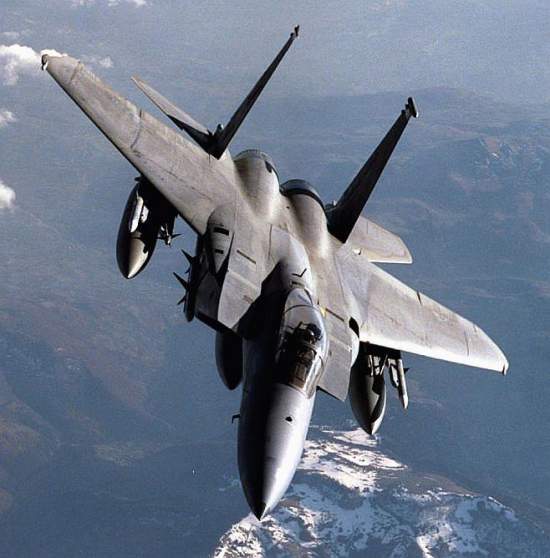
The one drawback to this aircraft was its expense. The cost of developing the state-of-the-art technologies needed for a plane superior to any other in the world was enormous. As a result, this extremely capable fighter could only be built in quantities too small to meet all the responsibilities of an air force spread around the world. The solution to this quandary was to build a second fighter with reduced capabilities but also much cheaper. What this less expensive aircraft lacked in quality would be made up for in the large quantity that could be purchased.
This "Lo" fighter in the mix would also be designed for a different purpose. This attack fighter would sacrifice all-out performance in favor of simplicity and low cost. Rather than air superiority, its primary mission would be ground attack carrying a variety of bombs and air-to-surface missiles. Air-to-air missiles would only be carried as a secondary armament for self-defense. The "Lo" fighter would instead depend on its "Hi" counterpart for escort and defense against any enemy fighter threat. The cost of the "Lo" fighter would be kept down by designing a much smaller plane with reduced range, a lower top speed, a less powerful radar, and simpler avionics. The fighter built to fulfill this role was the F-16 Fighting Falcon.
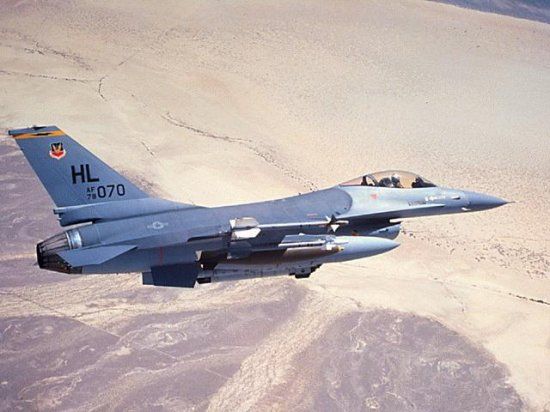
While the US Navy did not explicitly describe its force structure as a Hi-Lo mix, it too adopted a similar approach in purchasing new fighter aircraft. The "Hi" end was represented by the long-range, high-speed F-14 Tomcat dedicated air superiority fighter. This design featured a complicated variable geometry wing to maximize performance plus one of the most capable radar and weapon system combinations ever used on a fighter.

To complement the F-14 by providing a ground attack capability, the Navy purchased the F/A-18 Hornet as its "Lo" end fighter. This plane fulfilled a mission similar to that of the Air Force's F-16 by focusing primarily on a payload of bombs and surface attack missiles with a secondary air defense capability. Compared to its larger F-14 counterpart, the F-18 is also much smaller with reduced range, a less powerful radar, and is limited to a lower maximum speed.
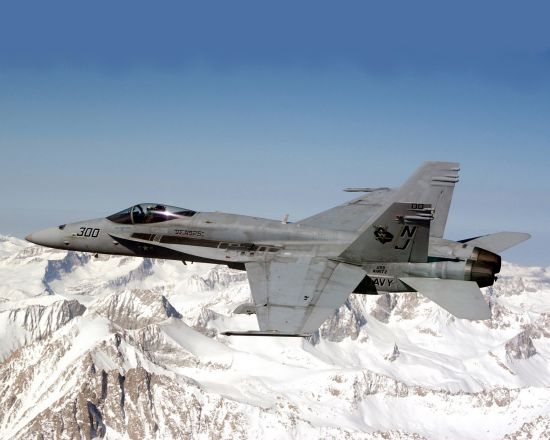
By the late 1980s, both the Air Force and Navy were beginning to look towards the future in anticipation of developing a new Hi-Lo mix to replace the F-15/F-16 and F-14/F-18. The Air Force began the Advanced Tactical Fighter program to develop its F-15 replacement, culminating in the F-22 Raptor. Like the F-15, the F-22 is also a very large and sophisticated fighter intended to outclass every other air superiority fighter in the world. The F-22 is also designed for high-speed, long-range missions carrying an armament of air-to-air missiles. Further improving its capabilities is a large and powerful long-range search radar complemented by an array of sophisticated avionics and computers.

Although the F-22 was originally designed purely for the air superiority role, the changing political climate following the end of the Cold War led Congress to question the value of such an aircraft. The Air Force has responded by integrating more ground attack weapons aboard the plane, such as JDAM and the Small Diameter Bomb, to provide a multi-role strike platform. It is for this reason that the F-22 was re-designated for a time as the F/A-22.
The Navy, meanwhile, has also moved away from the pure air superiority mission in its "Hi" end replacement for the F-14. This role is instead to be filled by the F/A-18E/F Super Hornet, a much larger and more advanced variant of the original F-18. The F-18E/F marks a significant shift for the Navy since it is primarily a ground-attack platform and not optimized for air superiority as the F-14 had been. The closest replacement for the F-14 is the F-18F variant that has a second seat for a systems officer to operate the radar similar to the backseater on the Tomcat. The single-seat F-18E, on the other hand, is primarily intended to be an attack fighter like the older F-18 Hornet models.
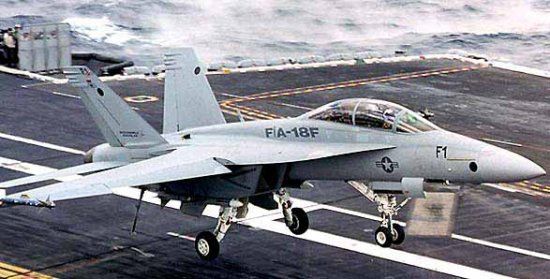
Having developed aircraft to fill the "Hi" portion of the force, both the Navy and Air Force turned attention to the "Lo" end of the mix. Both services had independent programs underway during the early 1990s to develop attack planes. Furthermore, the Marine Corps was also hoping to develop a new attack fighter of its own to replace the AV-8B Harrier. Unable to fund so many independent efforts, the Department of Defense directed the three services to merge their requirements into a single program called the Joint Strike Fighter.
The JSF ultimately became a competition between the Boeing X-32 and Lockheed Martin X-35. The winning design was to be built in three different versions to support the needs of the various services. A winner was announced in October 2001 when Lockheed Martin was awarded a contract to develop production models of the F-35.
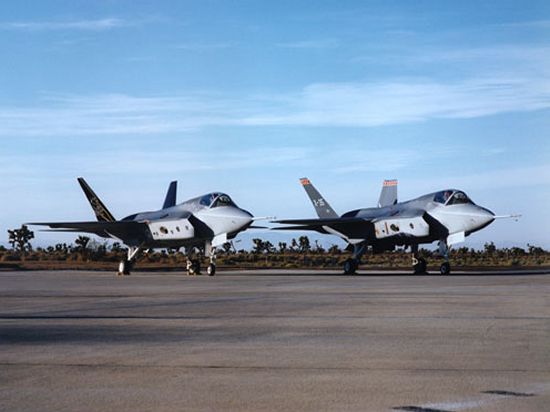
The F-35A is a direct replacement for the Air Force's "Lo" end F-16 fighter and is of similar size and capabilities. Like the F-16, the F-35A is primarily a ground attack aircraft with a secondary air defense capability. The F-35A takes advantage of many of the advanced technologies developed for the F-22, but has a shorter range, simpler avionics, and is less maneuverable. The US Marine Corps, as well as the Royal Air Force and Royal Navy in the United Kingdom, plan to buy the F-35B. This model is similar to the F-35A but modified to carry a second engine that allows vertical or short takeoff and landing performance. The Navy will buy the F-35C variant as a replacement for the older F-18 Hornet. Again, the F-35C is seen as a ground attack aircraft to complement the F-18E/F Super Hornet in the Hi-Lo mix.

In summary, the above scale diagram compares the Hi-Lo mix of the recent past with that the Air Force and Navy are
planning for the near future. The F-22 Raptor is a state-of-the-art air superiority fighter that will only be
operated by the Air Force. The F-35 Joint Strike Fighter, on the other hand, is a less capable multi-role fighter
optimized for ground attack that will be purchased not only by the Air Force, but also by the Navy and Marine
Corps. Whereas the Air Force's top-of-the-line F-22 and the Navy's F-18E/F will probably be purchased in
relatively small numbers, the F-35 is intended to be a low-cost aircraft to be bought in the thousands. This large
number of planes will round out the fighter fleets of the Air Force, Navy, and Marine Corps in the "Hi-Lo" mix of
the future.
- answer by Joe Yoon, 20 February 2005
Related Topics:
What can you tell me about the history of the F-22?
Read More Articles:


|
Aircraft | Design | Ask Us | Shop | Search |

|
|
| About Us | Contact Us | Copyright © 1997- | |||
|
|
|||